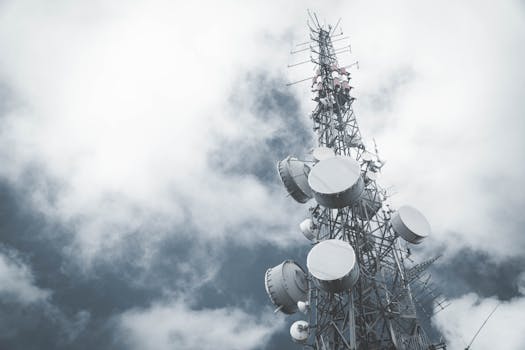Breaking Barriers: How Recent Developments are Transforming Satellite Communication

Breaking Barriers: How Recent Developments are Transforming Satellite Communication
Introduction to Breaking Barriers: How Recent Developments are Transforming Satellite Communication
Breaking Barriers: How Recent Developments are Transforming Satellite Communication is revolutionizing the way we communicate. With the advent of new technologies and innovations, the industry is experiencing a significant transformation. The focus of this article is on Breaking Barriers: How Recent Developments are Transforming Satellite Communication, and how it is impacting the world.
The satellite communication industry has been around for decades, but it has been limited by various factors such as high costs, limited bandwidth, and lack of accessibility. However, recent developments have been breaking these barriers, making satellite communication more efficient, affordable, and accessible to people around the world.
One of the significant recent developments in satellite communication is the launch of new satellite constellations. These constellations are composed of thousands of small satellites that work together to provide high-speed internet connectivity to remote and underserved areas. For instance, companies like SpaceX and OneWeb are launching satellites that can provide internet speeds of up to 1 Gbps, making it possible for people in remote areas to access high-speed internet.
Another recent development is the advancement in antenna technology. New antenna designs are being developed that are smaller, lighter, and more efficient. These antennas can be used in a variety of applications, including satellite communication, and can provide better signal quality and higher data rates.
The use of artificial intelligence (AI) and machine learning (ML) is also transforming the satellite communication industry. AI and ML can be used to optimize satellite operations, predict and prevent errors, and improve the overall efficiency of the system. For example, AI can be used to analyze data from satellites and predict when maintenance is required, reducing downtime and increasing the overall reliability of the system.
Advancements in Technology
Recent advancements in technology have been a significant factor in breaking the barriers in satellite communication. One of the key areas of development is in the field of propulsion systems. New propulsion systems are being developed that are more efficient and can provide longer mission durations. For example, companies like NASA and the European Space Agency are developing advanced propulsion systems that can provide higher specific impulse and more efficient fuel consumption.
Another area of development is in the field of materials science. New materials are being developed that are lighter, stronger, and more durable. These materials can be used in the construction of satellites, making them more efficient and reducing the overall cost of the mission.
The development of new sensors and instruments is also transforming the satellite communication industry. These sensors and instruments can be used to collect data on various parameters such as temperature, humidity, and pressure. For example, companies like Planet Labs are launching satellites that can collect high-resolution images of the Earth, providing valuable data for applications such as agriculture, forestry, and disaster response.
Impact on Society
The recent developments in satellite communication are having a significant impact on society. One of the most significant impacts is in the area of connectivity. Satellite communication is providing internet connectivity to remote and underserved areas, bridging the digital divide and providing opportunities for economic development.
Satellite communication is also being used in various applications such as navigation, weather forecasting, and disaster response. For example, companies like Garmin are using satellite communication to provide navigation services to pilots, sailors, and drivers.
The use of satellite communication is also transforming the field of education. Satellite communication can be used to provide access to educational resources, such as online courses and virtual classrooms, to students in remote and underserved areas.
Conclusion
In conclusion, recent developments in satellite communication are breaking barriers and transforming the industry. With advancements in technology and infrastructure, satellite communication is becoming more accessible and efficient. The impact of these developments on society is significant, providing connectivity, navigation, and education to people around the world. As the industry continues to evolve, we can expect to see even more innovative applications of satellite communication, transforming the way we live and work.





